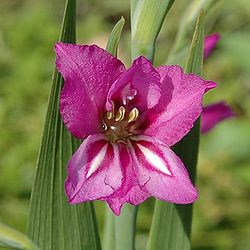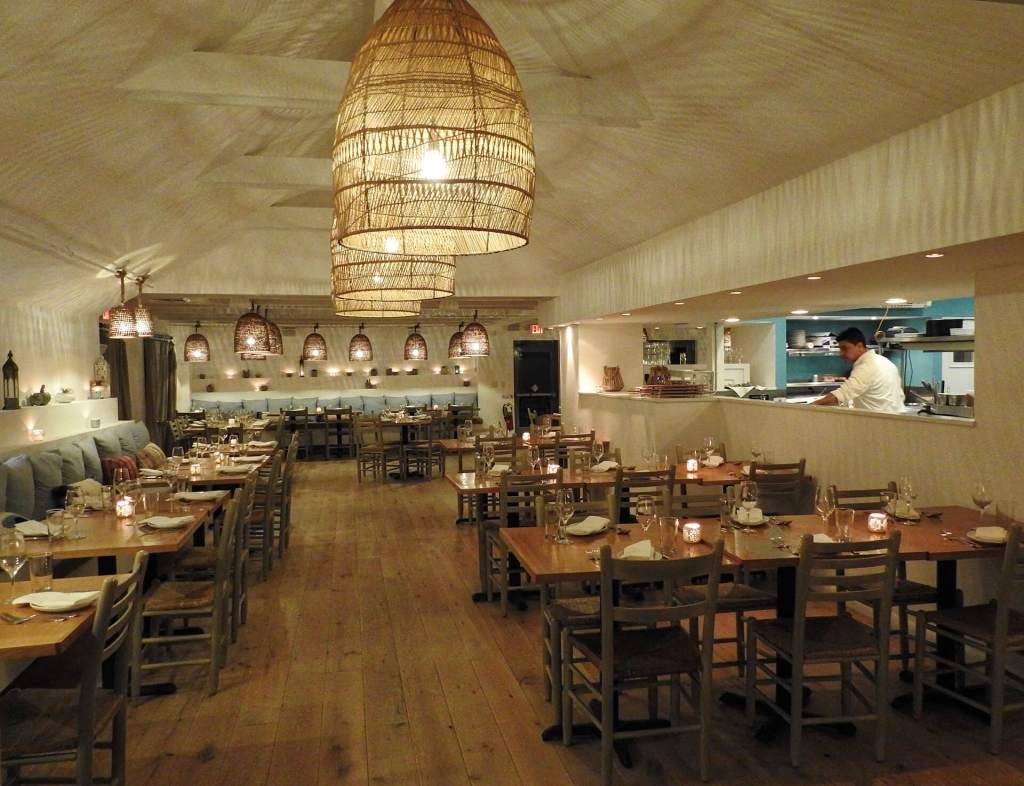View from the Garden: Gladiolus in Bloom

For six years, I worked with a man and his son both named Josue from Michoacán in Mexico. They are both great gardeners and father Josue still works with me. Last year, at the end of the working year, son Josue returned to Mexico having decided that he wanted to be “a Mexican man.” One of the several ways he supports himself and his family is by growing gladiolas. Michoacán is a major growing area for gladiolas, and this flower is used extensively in that culture. In partnership with his father, he is growing acres of gladiolas. I can only imagine the work and the sight!
Native to the Mediterranean and Africa as far south as South Africa and members of the iris family, gladiolas were described in plant literature in London as early as 1823. I have read that they were hybridized in Holland and England. In this country, their popularity has waxed and waned over the years. When I was a girl, my mother grew them in the garden where they stayed, not to be picked and brought into the house. We did not have flowers in the house; too showy, I suspect. And I often hear them today referred to as funeral flowers or too gaudy. I have begun to work for David Folkowsky at the Sag Harbor farmers market so I get to see people other than my husband and Josue and because I like and respect David and the market. David grows and sells two colors of gladiolas: chartreuse and deep purple. These two can hardly be called funeral flowers, as they are quite sophisticated and striking especially together in the vase.
Gladiolas are easy to grow and immensely rewarding for the beginning gardener. Be sure to buy large corms of named varieties. The mixes often are made of smaller corms and may not be too successful the first year. “When the oak leaves are the size of a gopher’s ear,” (how big is a gopher’s ear?) or after the soil has warmed up (that is when I plant them), plant them about six inches deep. They can be planted at two week intervals for a more continuous production. Sometimes the instructions say to put them in a trench. I put them in a hole. They need fertile, well-drained soil and consistent and regular water, though they cannot stand in water logged soil. Do not let them become weedy.
Cut them, leaving all of the leaves intact, close to the corm when the first flower buds begin to break, and it is a good idea to cut them because they will fall over if not staked as the flowers continue to bloom. In the fall, dig the corms, let them dry completely and store in a cool dark place for the winter. There will be many small cormlets clinging to the mother corm. When all are dry, break these off and store as above. The next year these can be planted in a nursery bed and the next year after that they will be large enough to produce flowers.
Given the above growing and storing rules, I must say that years ago, I planted some gladiolus corms in the garden in what I call my dry bed and they come up every year and bloom against all odds.
If you are remembering the gladiolas from years ago, you might consider the newly hybridized plants. There are amazing colors, combinations of colors, textures of flower petals from frilled to ruffled and they grow taller than the older ones.
There are even perennial gladiolas. They produce smaller flowers and shorter spires. The colors in the last few years have become more varied and interesting than in the past.
There is a cousin of gladiolus called Acidanthera that is lovely, elegant and fragrant. The growing and keeping conditions are like those for regular gladiolas. The flower spires in corms I planted this year are four feet tall. The flowers are white with a maroon throat. These do not need staking.
With a little commitment to experimentation, the exuberant colors and big statement of gladiolas in the vase can enhance your summer!
For a gardening discussion, call Jeanelle Myers at 631-434-5067.









